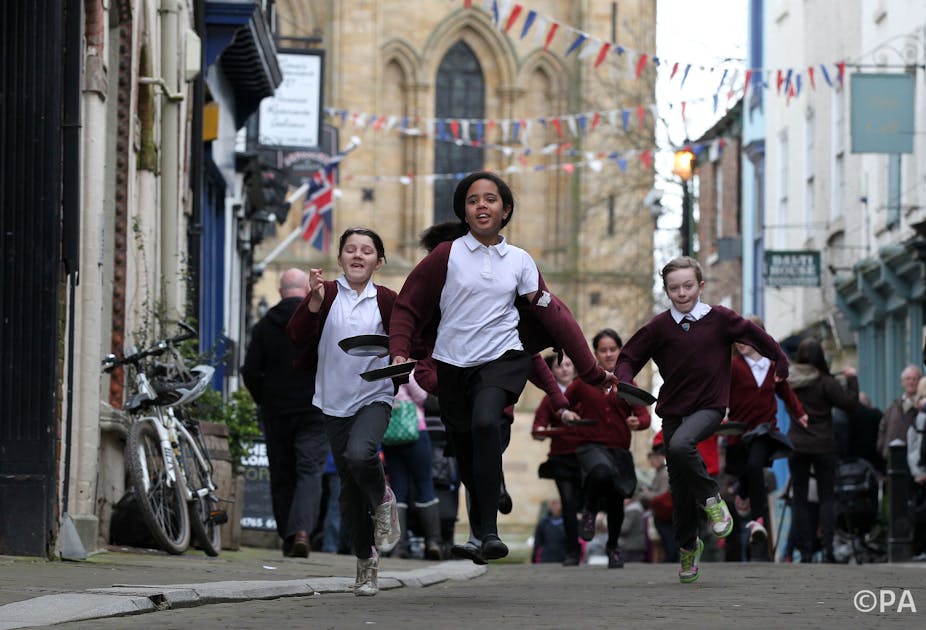The well-being of children in the UK has seen significant improvement over the past decade or so. This is supported by evidence from the latest comparative study on child well-being published by UNICEF in 2013.
UNICEF’s Report Card 11 ranked the well-being of UK children 16th out of 29 developed countries overall. This result is a significant improvement compared to a similar exercise in 2007, which put the UK at the bottom of the league table based on data from 2000 and 2003. The Netherlands topped the latest ranking, followed by Norway and Iceland.
Analysis of subjective well-being time trends based on data from the Youth Questionnaire of the British Household Panel and Understanding Society Survey also shows an increase in child well-being.
Evidence on child well-being
The UNICEF report card, which is being discussed by MPs on the Education Select Committee, drew on the most recent available international comparative data from 2009-2010. It looked at how well children were doing in various aspects of their lives based on some objective indicators, as well as taking into account how children rated their own life satisfaction.
UNICEF assessed five areas of children’s lives: material well-being, health, behaviour and risks, education, housing and environmental safety. Comparing these five areas across the 29 countries, children in the UK fared particularly well in the aspect of housing and environmental safety (ranked 10th), followed by material well-being (ranked 14th), behaviour and risks (ranked 15th), and health (ranked 16th). Education was the aspect with the worst ranking – 24th.
Room for improvement
All these rankings suggest that there is still a lot of room for the UK government to improve in order to bring the standard of child well-being closer to our competitive European peers. Improvement is particularly needed in the domain of education, through increasing the participation rate of 15-19 year-olds in further education, currently at 74%. The introduction of compulsory education for 16-18 year olds from 2015, may go some way to improving this. The UK also needs to reduce the rate of NEETS, young people not in education, employment or training. A recent research finding suggest that failure to tackle the problem of young people NEET over the life-time could cost the public finance at the lowest estimate, around £12 billion.
Specific attention must also be paid to the relatively high rate of teenage pregnancy in the UK (30 births per 1,000 girls aged 15-19) and alcohol abuse by nearly 20% of school children aged between 11 and 15.
Focus should be put on narrowing the poverty gap, defined as the distance between the child poverty line and the median income of those below the line. The UNICEF study showed that 23% of our materially deprived children fell into this gap. Immediate attention is needed if their life chances are not to be adversely affected. Improvement could also be made to raise the standards of housing in the UK by addressing some common housing problems reported, such as leaking roofs, damp walls, and rotten windows.
Influence on later life
Happiness and life satisfaction, known as subjective well-being, also increased among children. According to data from the British Household Panel and the Understanding Society survey, children in the UK experienced a rise in subjective well-being between 1994 and 2008. But there are some early indications that these improvements have stalled and may have begun to reverse in the recent years. The economic recession and the austerity measures that followed could perhaps explain this.
There is some evidence which suggests a potential link between subjective well-being during adolescence and later success. Based on data from the British Household Panel, researchers at the University of York’s Social Policy Research Unit found higher self-esteem during early adolescence was associated with an increase in the likelihood of educational attainment (achieving at least A-level qualification). It was also linked to participation in either further education or employment and training for both boys and girls.
The well-being league tables published by UNICEF clearly suggest child well-being can be improved and the British case provides a good example. The marked improvement in UK children’s well-being over the decade could be attributed to the huge policy and financial commitment of the previous Labour government in improving children’s lives and well-being. Perhaps without this, the well-being of our children would not have seen such a huge improvement and may still lag behind many of our European counterparts.
However, this progress is at risk of being reversed under the current climate of austerity. Poor families with children are the hardest hit. There is already research evidence] which show real incomes have fallen and absolute poverty is increasing. It is predicted that all the gains in reduced child poverty since 1999 will be swept away by 2020. Sensible policy must be in place if children’s well-being and their futures are to be preserved and protected.

